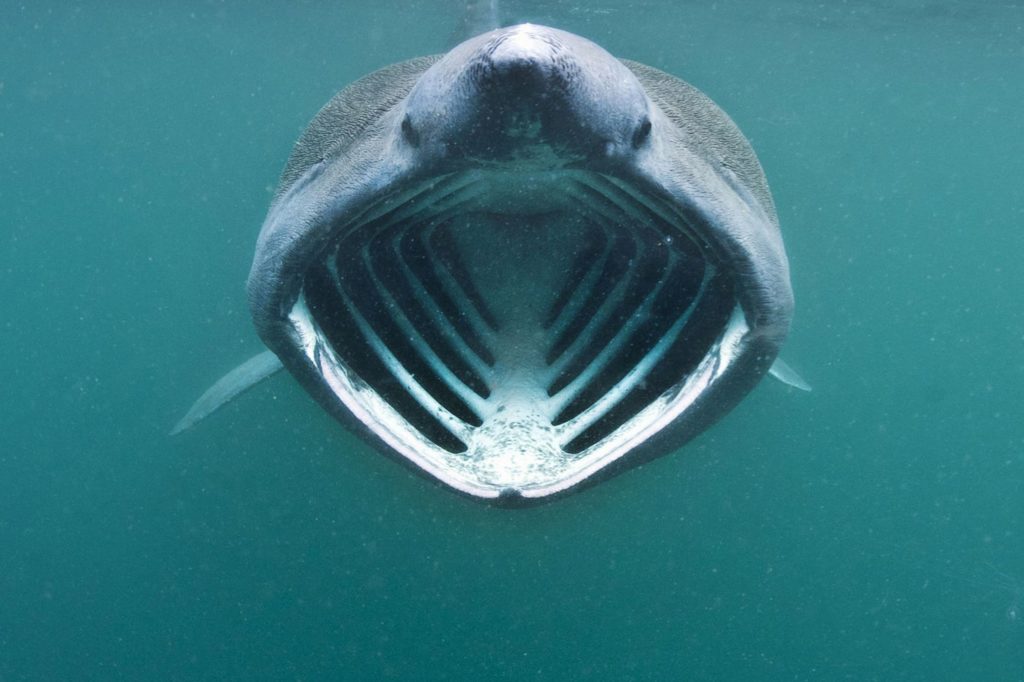
27 Fear Inducing Images Of The Ocean Page 4 Activly
Length: up to 12m Weight: up to 6 tonnes Average Lifespan: unknown, thought to be around 50 years Conservation status The North East Atlantic population are classed as Endangered on the IUCN Red List. They are listed under CITES Appendix II and classified as a Priority Species under the UK Post-2010 Biodiversity Framework.

Basking Shark with its mouth closed. Someone must have said something perturbing
1. THEY'RE BUS-SIZED FILTER-FEEDERS. The two biggest fish in the sea consume surprisingly tiny animals. Basking sharks can grow to be 36 feet long and weigh four tons or more. Within the world.

Basking Shark Facts Habitat, Diet, Conservation & More
The sharks were hunted around the UK until 1995, when the last basking shark fishery in British waters closed. Basking shark populations have been severely depleted by years of hunting.. The basking shark can open its mouth up to a metre wide. It is the world's second largest fish, surpassed only by the whale shark.

Basking Shark
Aug 10, 2021 at 11:27 AM EDT By Sara Santora Writer, Trends A wildlife ranger in Scotland had a rare encounter with an endangered basking shark Monday. In a video shared by the National Trust.
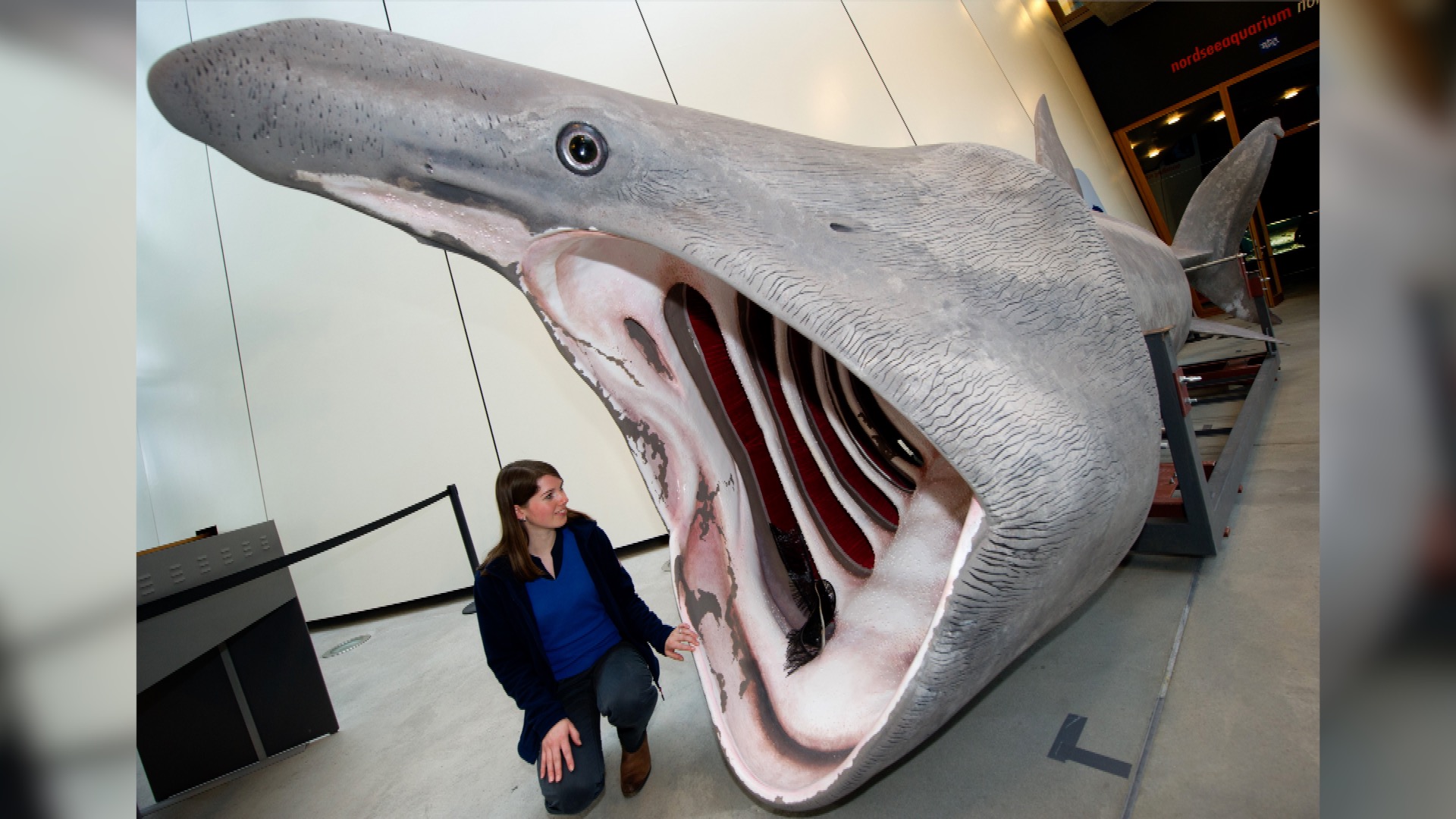
Video ‘SharkCam’ Captures Lives of Basking Sharks in Scottish Waters
The basking shark is known for its giant mouth and gills. They have also been called elephant sharks due to the appearance of their snouts. Cetorhinus maximus, in Greek, means "great-nosed sea monster". Even though they are the second-largest fish on Earth (after the whale shark), basking sharks are harmless to humans. They are truly gentle.

Image result for basking shark Basking shark, Shark, Shark mouth
Basking sharks are one of three species of large, filter-feeding sharks, alongside whale sharks and the megamouth sharks. Basking sharks rely on the passive flow of water through their throats, also called the pharynx, while swimming. Food is filtered from the water by gill rakers, which look like the prongs of a rake, located in the gill slits.
:max_bytes(150000):strip_icc()/GettyImages-76222832-484a54b7810e41089a446858ac300a3d.jpg)
8 Fascinating Facts About the Majestic Basking Shark
Although it was proposed over two decades ago that dense zooplankton patches aggregate basking sharks which may then result in social grouping (e.g., close-following behaviour involving males and.

Basking shark 10 things everybody should know DIVE Magazine
8 min read The basking shark is one of the Earth's giants. Scientifically known as Cetorhinus maximus, the basking shark is the second-largest living shark, behind the whale shark. It is one of three passive sharks that eat plankton by filter feeding. The other two plankton feeders are whale sharks and megamouth sharks.
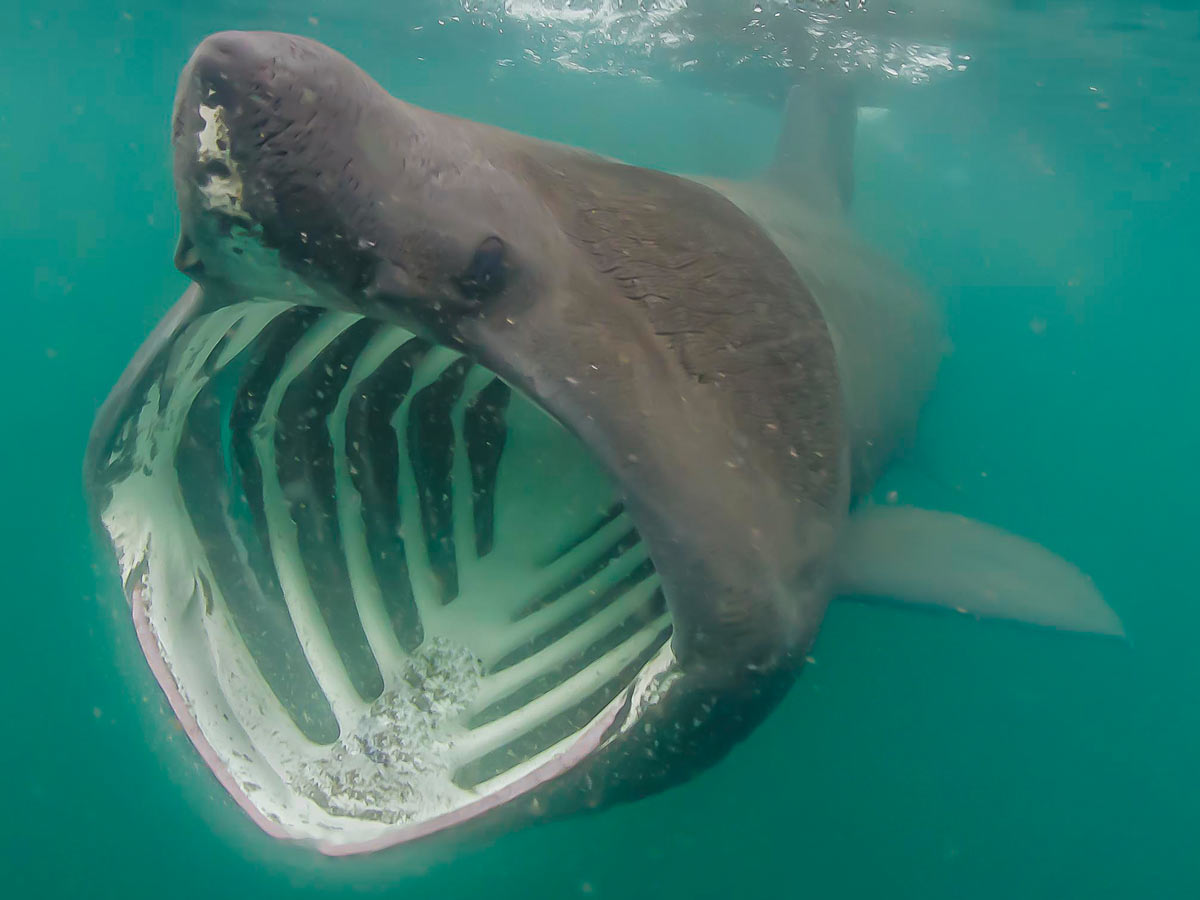
The Basking Shark California Diving News
Basking sharks are passive and no danger to humans in general, but they are large animals and their skin is extremely rough, so caution is urged during any encounters. Order - Lamniformes Family - Cetorhinidae Genus - Cetorhinus Species - maximus Common Names Basking Shark. Photo © Dan Burton
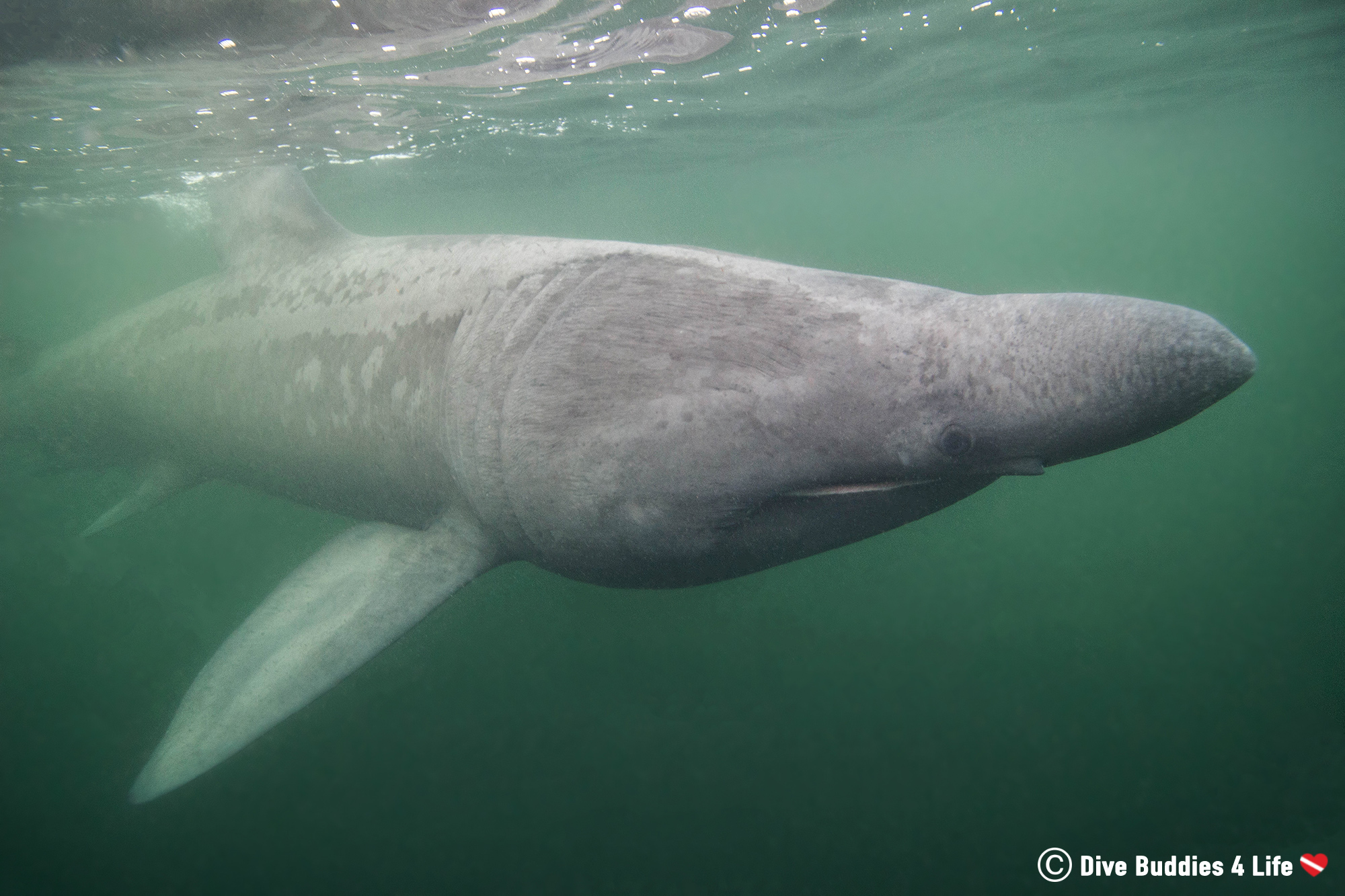
Scotland Basking in Glory Dive Buddies 4 Life
(jidanchaomian via Flickr) The basking shark is the second largest living fish, coming in behind the whale shark at a maximum length of about 30 feet (9 meters). Swimming along with its dorsal fin sticking up above the surface of the water, it can easily spook humans.

Basking Shark Fishes
1. One basking shark can filter 4,000,000 pounds of water in only one hour while filter feeding Basking sharks weigh nearly 10,000 pounds, but plankton is microscopic. So in order for a basking shark to survive, it needs to eat hundreds of pounds of zooplankton every day.

Basking Sharks SHARK ACADEMY YouTube
Mouth Mechanics Gill Slits Function Why Is the Basking Shark's Mouth Usually Open? When and Why Do They Close Their Mouths? What Happens Inside the Mouth when Closed? How Do They Reopen the Mouth to Resume Feeding? What Triggers the Mouth to Open or Close? Basking Shark Anatomy

Meet the man who hangs out with basking sharks
The basking shark is a large filter-feeding shark that feeds on plankton and is often seen swimming with its mouth wide open. It is the world's second-largest living shark, after the whale shark. Despite its large size, the basking shark is generally harmless to humans.

ScaryLooking Basking Sharks Are The Gentle Giants Of The Ocean The Dodo
Basking Sharks: Basking sharks are the second-largest sharks on Earth. The only species larger than the 40-foot-long basking shark is the whale shark, which can grow a few feet longer and weigh between two times and four times as much as the basking shark. Answer and Explanation: 1
/cloudfront-ap-southeast-2.images.arcpublishing.com/nzme/PBLTP5KP2S4GAEVYZXKEHWPUVI.jpg)
Satellites help track mysterious ocean giant NZ Herald
Yes, basking sharks can close their mouth whenever they want but it is not a common sight. Commonly, basking sharks move with their mouths wide open to filter prey and keep feeding themselves. Does a Basking Shark Have Teeth? Basking sharks do have teeth. Basking sharks are enormous in size, but their teeth are minute.
The mouth of a basking shark oddlyterrifying
The basking shark is one of only three species of filter feeding sharks, the other two species are the whale shark and the megamouth shark. The basking shark is even more unique as it is the only species which only feeds passively. In simpler terms, the basking shark swims around with its big open mouth hoping to filter as much food as possible.